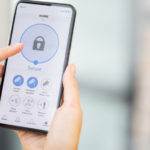As many Paycheck Protection Program borrowers approach the end of their loan terms, confusion persists about the eligibility requirements for loan forgiveness. The program, which was created under the CARES Act, has been a lifeline to many small businesses forced to reduce operations or close their doors entirely due to the COVID-19 pandemic. The Small Business Administration, which operates PPP, and the Treasury Department have released several rounds of guidance providing details on forgiveness requirements:
- Seventy-five percent of the loan must go toward maintaining payroll costs.
- The loan must be fully disbursed either within eight weeks of the borrower receiving the funds or, for payroll costs only, within eight weeks following the first payroll period after receiving the funds.
- The borrower must maintain the same number of full time-equivalent employees during the eight-week period of the loan as before the pandemic.
- The remaining 25% of the loan must go toward an eligible use, such as utility payments, rent or mortgage interest, or payroll costs.
However, the Paycheck Protection Program Flexibility Act, which was passed by the House last week and would make several changes to the terms of loans, likely will change some of the requirements for forgiveness. Senate action is expected this week.
The SBA and Treasury released the forgiveness application forms last month. Notably, businesses must reduce the amount of the loan qualifying for forgiveness by any proportionate percentage drop in employee numbers, but they have until June 30 to rehire or fill those positions. Independent contractors and the self-employed will have an amount equal to an eight-week portion of their 2019 net earnings—capped at $15,385 and based on their 2019 Form 1040 Schedule C, Line 31—automatically forgiven. But those borrowers cannot use any of the remaining loan amount for payroll costs. The borrower must certify that the 25% of the loan that is not required to go toward payroll went to one of the eligible uses and provide documentation verifying their payroll costs and non-payroll costs, as well as the average number of FTE employees before and during the eight-week coverage period.
The SBA is auditing all loans of more than $2 million and has cautioned that it has the right to audit any PPP loan, regardless of the amount. However, the agency also said that loans for less than $2 million will generally be considered to have met the “good faith” requirement for showing the need for the loan. Borrowers who do not meet all of the requirements may still be eligible for partial forgiveness, and the SBA has set the repayment terms at five years with 1% interest. Borrowers can prepay any portion of their PPP loans without penalty.
SBA lenders are still accepting PPP applications, and the program still has funding, but it is currently set to close on June 30. Stay up-to-date on PPP loans at nar.realtor/coronavirus.












